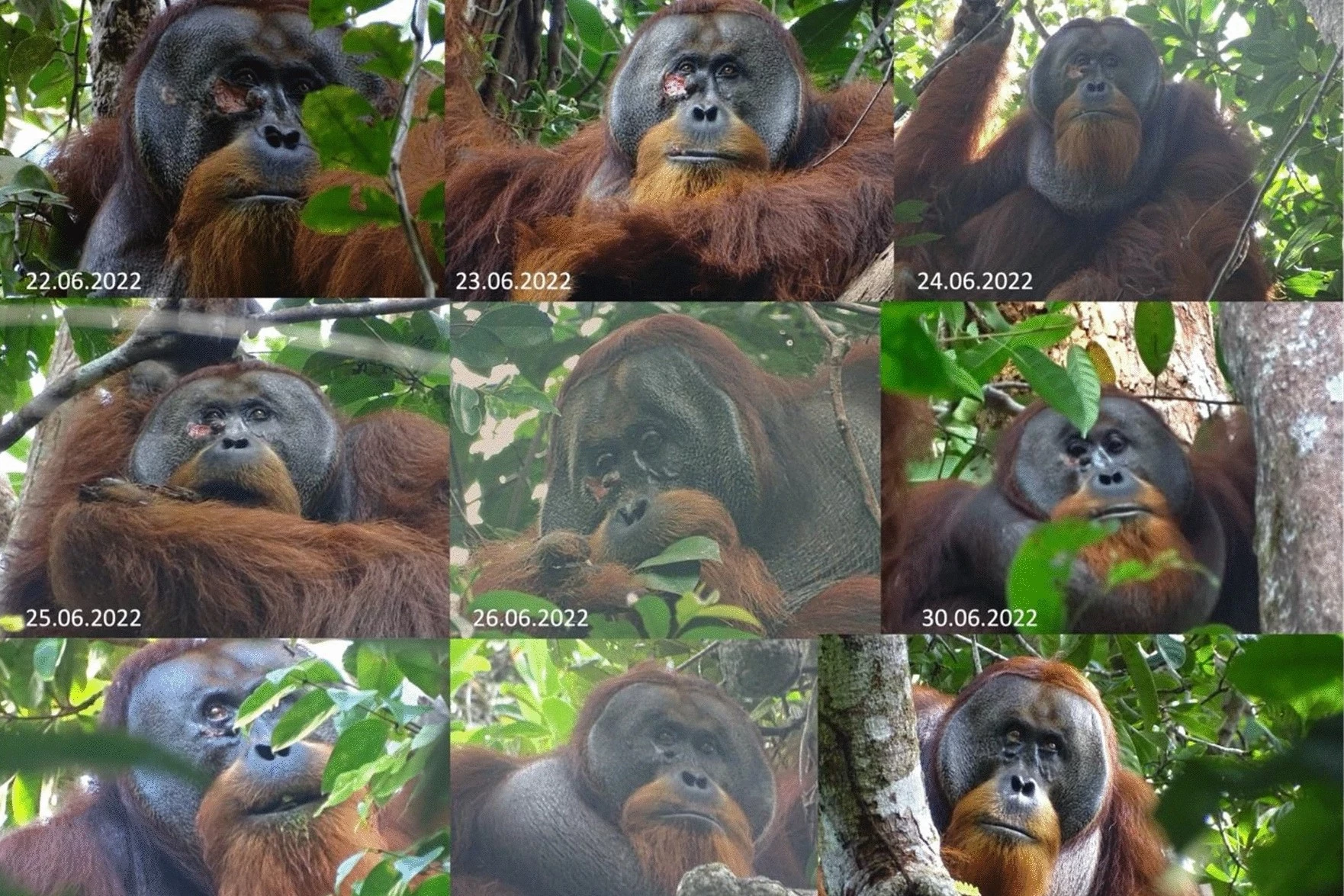For the first time ever, a wild male orangutan in Sumatra has been spotted tending to a wound on his face in an ingenious way. The technique worked, adding even more cred to the intelligence of this striking and endangered species of great ape.
At a northern Sumatra national park in Indonesia a team of researchers observed a wild male orangutan with a wound on his face that was about three days old. That, of course, isn't unusual. What came next, though certainly was. The team saw Rakus, the name given to the great ape by the researchers, chew leaves from a liana vine known as Akar Kuning or Fibraurea tinctoria and then rub the resulting juice directly onto the wound. He then coated the treated wound with a paste made from the leaves.
Liana leaves have been used by humans for centuries as herbal medicine and scientific studies have revealed that the plant contains anti-fungal, anti-viral, antibacterial, and antioxidant properties.
After five days the team observed that Rakus' wound had closed completely and there was no sign of infection. Because Rakus repeatedly applied the poultice only to the wounded area, the team feels it is safe to say that the animal was engaging in self-treatment. As such, this is the first reported incidence of a wild animal engaging in suspected wound treatment using a plant that has known medicinal qualities.
While this is an observational first, it is not the only time researchers have seen animals take steps to heal themselves. They've observed apes and chimps consuming a range of medicinal plants, which they could have been doing for the therapeutic benefits. In fact, one study saw that a group of chimps chewed the bitter pith of the Vernonia amygdalina plant to treat a worm infection.
They've also seen a wounded female orangutan in Borneo eating ginger leaves and stems possibly to harness the plant's antibacterial and antiviral properties. And in the Central Kalimantan region of Borneo, a group of orangutans were seen chewing the leaves of the Dracaena cantleyi plant to produce a lather which they then rubbed onto their arms and legs. This plant is documented as an anti-inflammatory and has been used by traditional healers to reduce muscle soreness and joint or bone pain.
But in terms of seeing a non-human animal directly treating an open wound with plant medicine, Rakus' behavior marks a first.
"This possibly innovative behavior presents the first systematically documented case of active wound treatment with a plant species know to contain biologically active substances by a wild animal and provides new insights into the origins of human wound care," say the researchers in a paper documenting the study published in the journal Nature.
Source: Scientific Reports via EurekAlert





